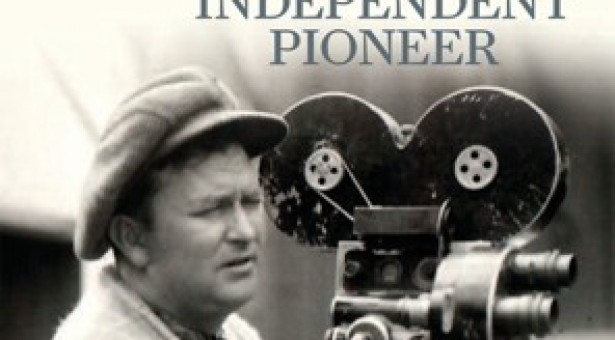Brian Taves: Thomas Ince – Hollywood’s Independent Pioneer

Česká verze recenze je dostupná zde / Czech-language version of the review is available here
Even though the name of Thomas H. Ince (1880-1924) appears in every reliable survey of film history, our notions about his contributions to cinema are largely vague and distorted. And to make things even worse, more often than with films and innovations linked with the process of their production is Thomas Ince associated with his untimely death in November 1924. According to the legend, backed up recently by a film version of Steven Peros’s play The Cat’s Meow (2001, directed by Peter Bogdanovich), Ince was killed during a yacht cruise by newspaper tycoon William Randolph Hearst who – allegedly acting in a jealous rage – mistook his friend and business associate for philandering Charles Chaplin. In Thomas Ince: Hollywood’s Independent Pioneer, Brian Taves, archivist with the Library of Congress, decided to put an end to these myths once and for all and to direct our attention to what’s really important: Ince’s achievements as an independent producer.
 In the „Introduction“ Taves makes absolutely clear that the cause of Ince’s premature death was thrombosis which developed as a consequence of his ulcers. Years of labor and stress took their cruel toll. Taves’s decision to rebut all speculations surrounding Ince’s demise right at the start seems wise and well-judged. It enables him to devote the following chapters of the book solely to Ince’s professional career, which is chronicled from his beginnings as a stage actor through his first directorial efforts to his becoming Hollywood’s foremost film producer. Taves makes central Ince’s interactions with other Hollywood companies and individuals – all those directors, producers and distributors with whom he made professional contact. Ince is described as a pioneer of independent production and relentless innovator: he was one of the first to start using detailed shooting scripts, he understood the importance of division of labor, he built the first major modern film studio known as Inceville and he strengthened the authencity of his films by using real locations and ethnic actors. In every respect he proved himself a talented filmmaker, viewing cinema both as art and business enterprise. His films1 tried to attract audiences not only with spectacular sequences (known as Ince punches), but also with their topicality: many of them focused on issues such as alcoholism, drug addiction, men’s violence toward women and even yellow journalism.
In the „Introduction“ Taves makes absolutely clear that the cause of Ince’s premature death was thrombosis which developed as a consequence of his ulcers. Years of labor and stress took their cruel toll. Taves’s decision to rebut all speculations surrounding Ince’s demise right at the start seems wise and well-judged. It enables him to devote the following chapters of the book solely to Ince’s professional career, which is chronicled from his beginnings as a stage actor through his first directorial efforts to his becoming Hollywood’s foremost film producer. Taves makes central Ince’s interactions with other Hollywood companies and individuals – all those directors, producers and distributors with whom he made professional contact. Ince is described as a pioneer of independent production and relentless innovator: he was one of the first to start using detailed shooting scripts, he understood the importance of division of labor, he built the first major modern film studio known as Inceville and he strengthened the authencity of his films by using real locations and ethnic actors. In every respect he proved himself a talented filmmaker, viewing cinema both as art and business enterprise. His films1 tried to attract audiences not only with spectacular sequences (known as Ince punches), but also with their topicality: many of them focused on issues such as alcoholism, drug addiction, men’s violence toward women and even yellow journalism.
Taves’s book is a result of a long-time research and study of corporate papers, accounts from popular and trade journals of the time and surviving films. The author took advantage especially of the collection of Ince corporate papers held by the Library of Congress in Washington, D.C. The book presents a detailed, almost pedantic account of Ince’s activities supported by excerpts from financial reports, inter-company memos, publicity materials, magazine articles etc. As evidence of Taves’s thoroughness we can point out to the „Notes“ section consisting of more than a thousand meticulously compiled records documenting and cross-referencing every piece of information, however small. The text is complemented by a 12-page bibliography and an index.
The long overdue Thomas Ince: Hollywood’s Independent Pioneer will undoubtedly become a priceless handbook for everyone interested in the history of American film industry. Taves is being given plaudits right now for his superb accomplishment – the book has received praise from the director of UCLA Film & Television Archive Jan-Christopher Horak, film historians Tino Balio and Richard Koszarski or editors of the Huffington Post, who listed it among the best books on cinema of 2011.2
Thomas Ince: Hollywood’s Independent Pioneer
Brian Taves
Lexington, University Press of Kentucky
2012, 367 pages
order the book here
interview with the author
- In 14 years of his active career, Ince was responsible for approximately 800 films. Only a third has survived. [↩]
- Even though the book wasn’t officially released until February 2nd 2012. See http://www.huffingtonpost.com/thomas-gladysz/best-books-2011_b_1142592.html [↩]






